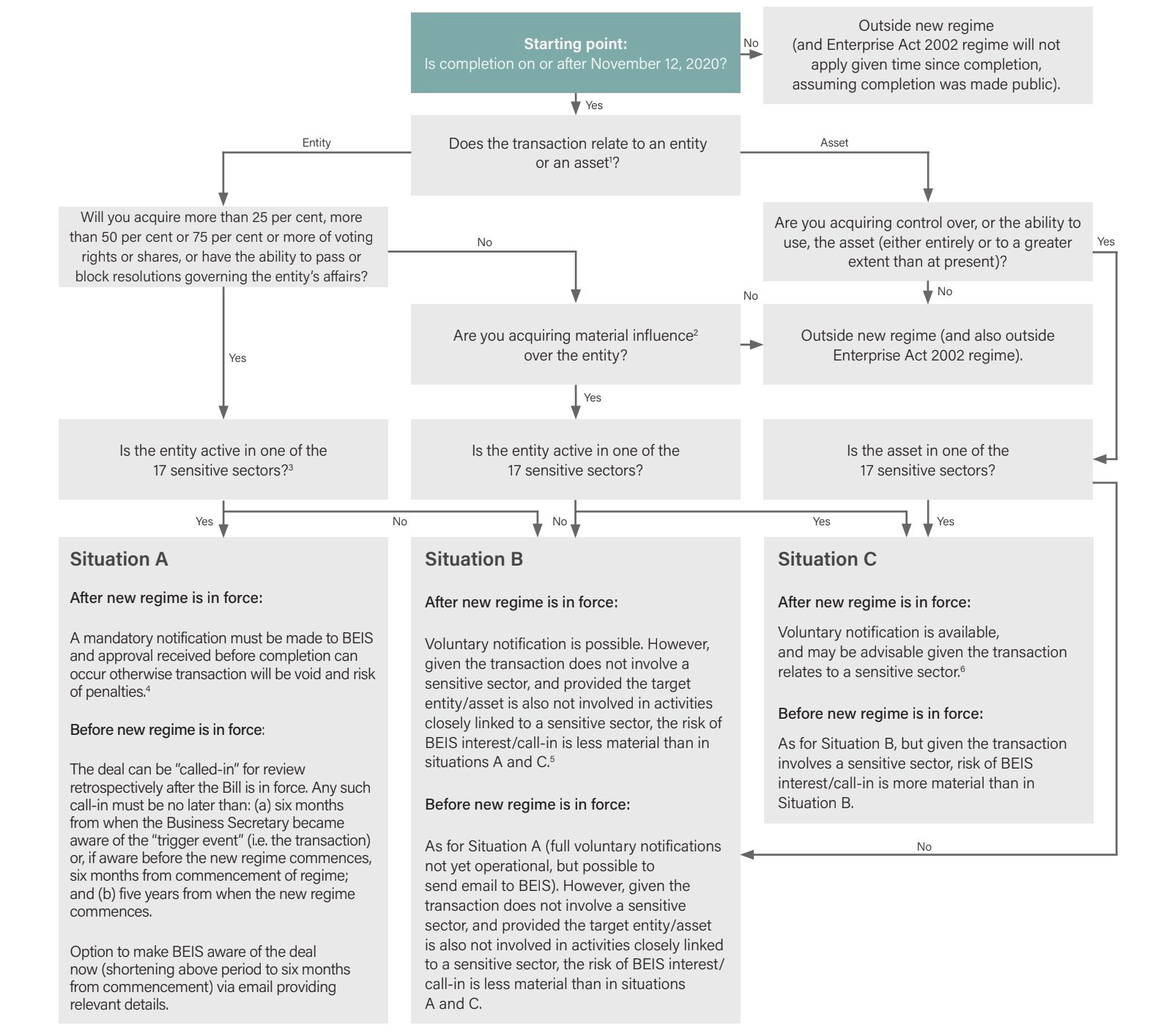Undoubtedly the UK is one of the most open economies in the world but “defence of the realm is the first duty of government”¹, and call-in powers are not meant to change the country’s commitment to business, entrepreneurship, and innovation, but to protect it and its citizens. The UK National Security and Investment Act 2021 came into force on the 4th of January 2022, and requires the disclosure of acquisitions that may give rise to a national security risk. This is complex legislation that carries with it severe penalties to fund management, directors, and even, in certain cases, to the fund investors.
If planning an acquisition of what is deemed to be a “qualifying entity” in one of 17 defined sensitive areas of the UK economy (listed below), government notification is required. If this is not done, then the acquisition will be deemed void and acquirers will be subject to both civil and criminal penalties.
A qualifying entity is a company formed outside the UK, and carries on activities in the UK or supplies goods or services to persons in the UK. An example of an entity that would qualify would be a foreign company with a branch in the UK that may have even availed of SEIS/EIS.
The 17 defined areas of the economy are what the government identifies as potentially posing a national security risk (referred to as “target risk”). They are the following sectors:
- Advanced materials
- Advanced robotics
- Artificial intelligence
- Civil nuclear
- Communications
- Computing hardware
- Critical suppliers to the government
- Cryptographic authentication
- Data infrastructure
- Defence
- Energy
- Military and dual use
- Quantum technologies
- Satellite and space technologies
- Suppliers to the Emergency Services
- Synthetic biology
- Transport
This captures a large number of technology and robotics companies. The government assesses acquisitions into these “qualifying entities” on a case-by-case basis and evaluates them across three categories: target risk, acquirer risk, and control risk. Below is a brief description of each of these categories.
1. Target risk –relates to whether a target company falls within the above-listed sectors, is formed or recognised outside of the UK, undertakes activities in the UK, or supplies goods and services to persons in the UK.
2. Acquirer risk – relates to whether the acquirer ( any funds planning on investing into a qualifying entity) is linked to hostile activity.
3. Control risk – if the acquirer is obtaining over 25% of either the shares or voting rights.
Acquisitions scoring high on this risk matrix will be automatically void if completed without governmental approval. Acquirers must give notice prior to any transaction that would place them in a position of significant influence or effective control of a qualifying entity. Once notification is provided, the government has six months to review and decide whether to allow the transaction to go ahead.
There is also a retrospective clause, whereby any transaction completed from the 12th of November 2020 onwards will need to be disclosed. For qualifying transactions that occurred between the 12th of November 2020 and the 3rd of January 2022, notice must be given before the 4th of June 2022.
The following decision tree can be used to ascertain whether a prospective transaction is notifiable:
 Souce: Norton Rose Fulbright
Souce: Norton Rose Fulbright
Fund managers must be aware that they have a duty to take timely action if required. It should be noted that the acquirer can be either UK or foreign, so this applies to all relevant transactions, with no exclusions on the basis of an investor's nationality. Another key point is that transactions can still be called upon for notification even if they do not meet the qualifying criteria, which implies a level of governmental discretion depending on whether there are reasonable grounds to suspect a risk to national security. There are many aspects to the legislation yet unclear and this poses a concern to us as investment managers. It will be interesting to see just how the National Security and Investment Act will ultimately be applied.
1. The Armed Forces Covenant, The Ministry of Defence www.mod.uk



